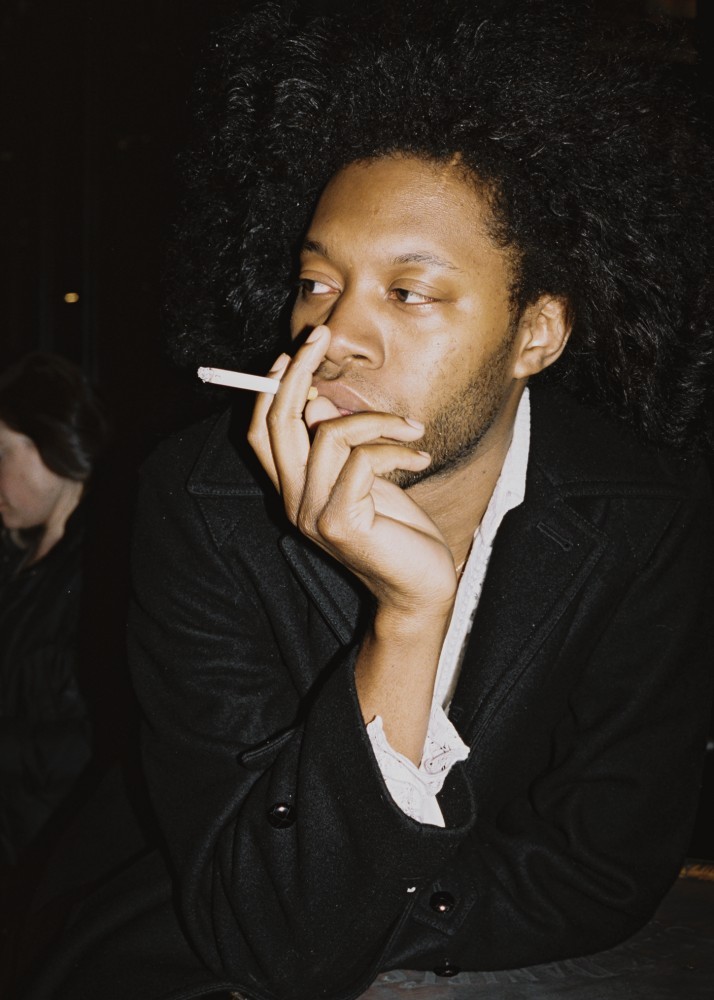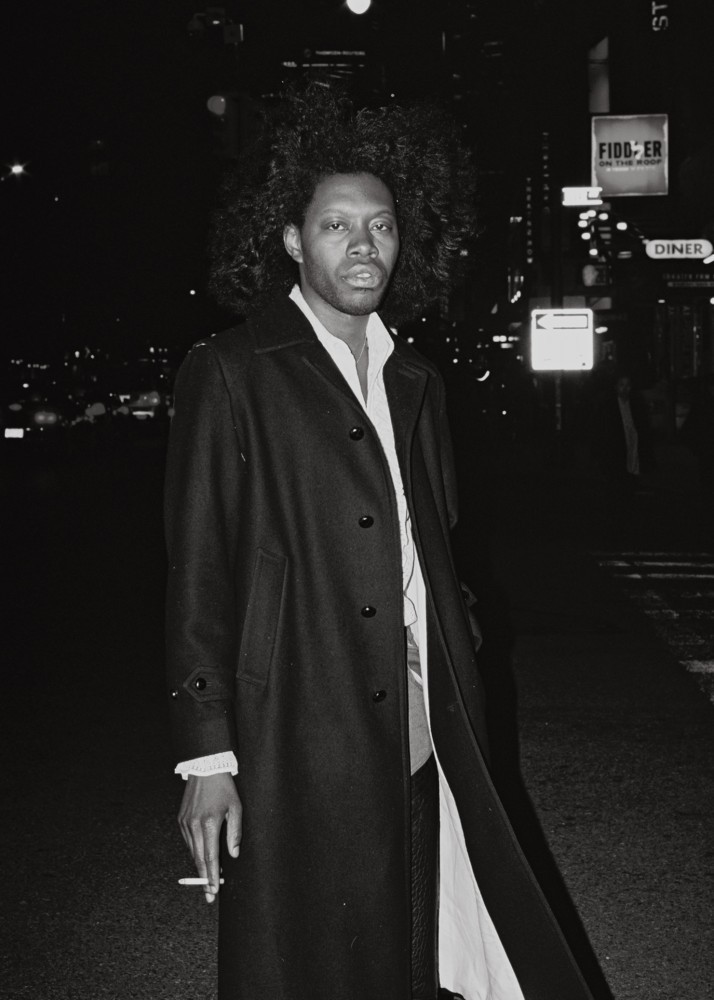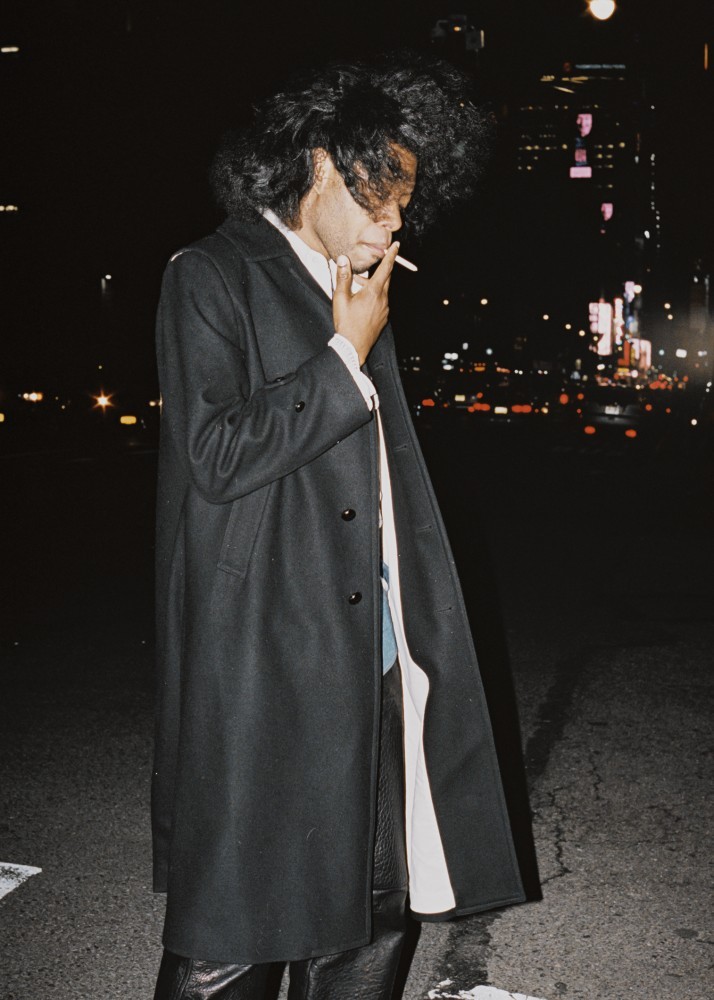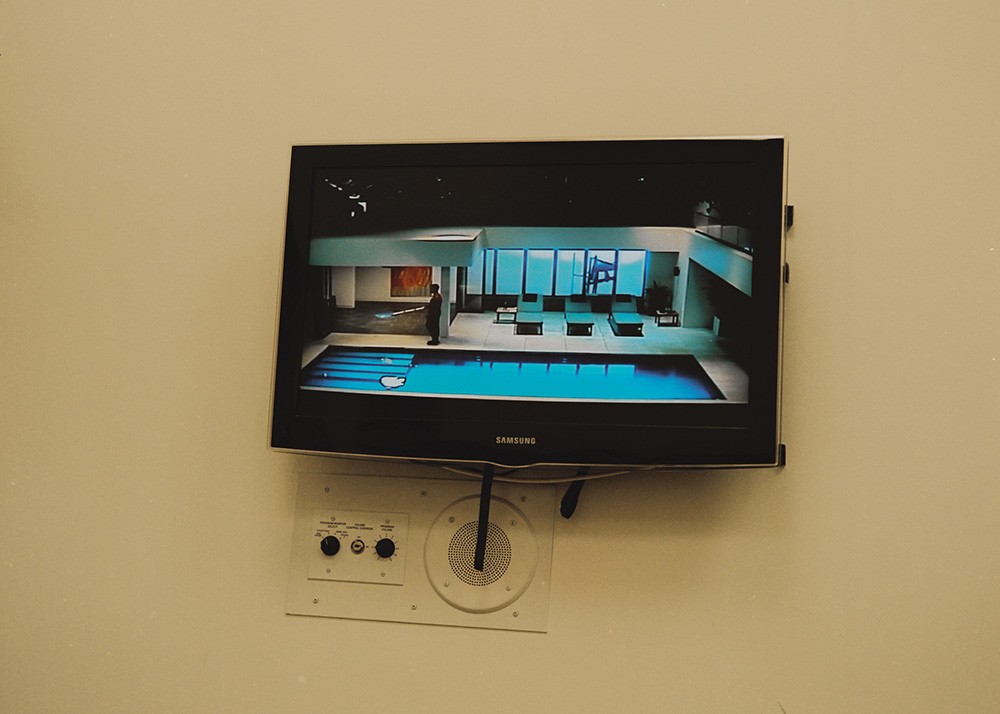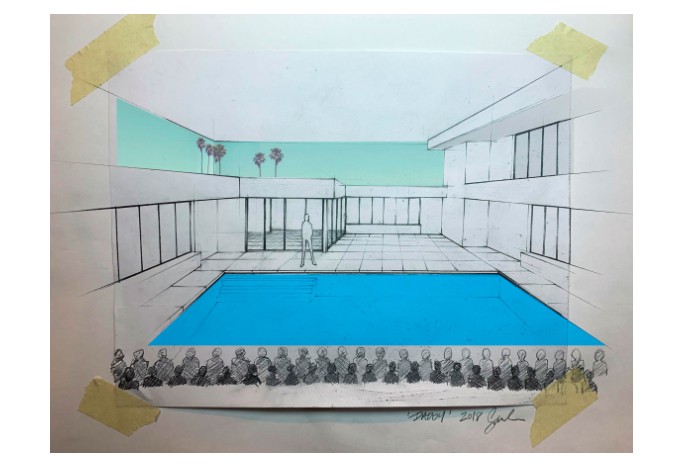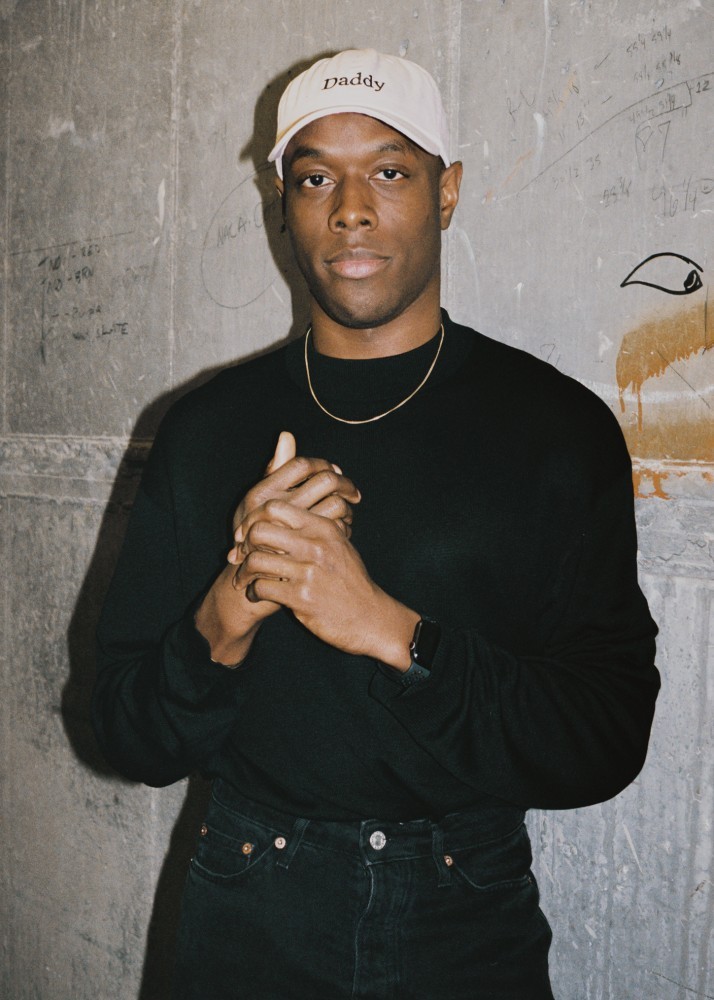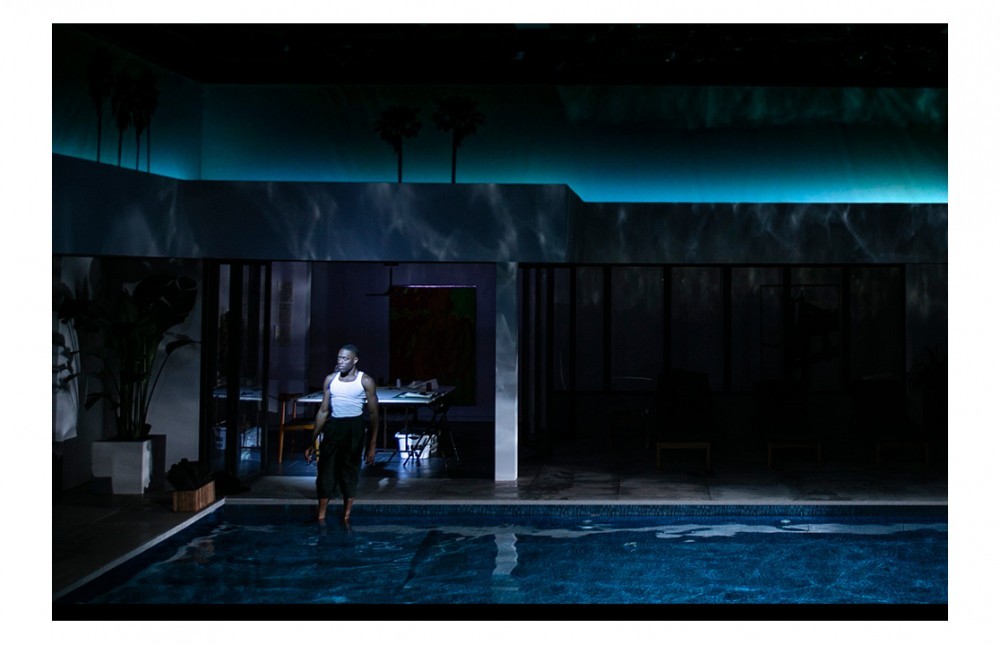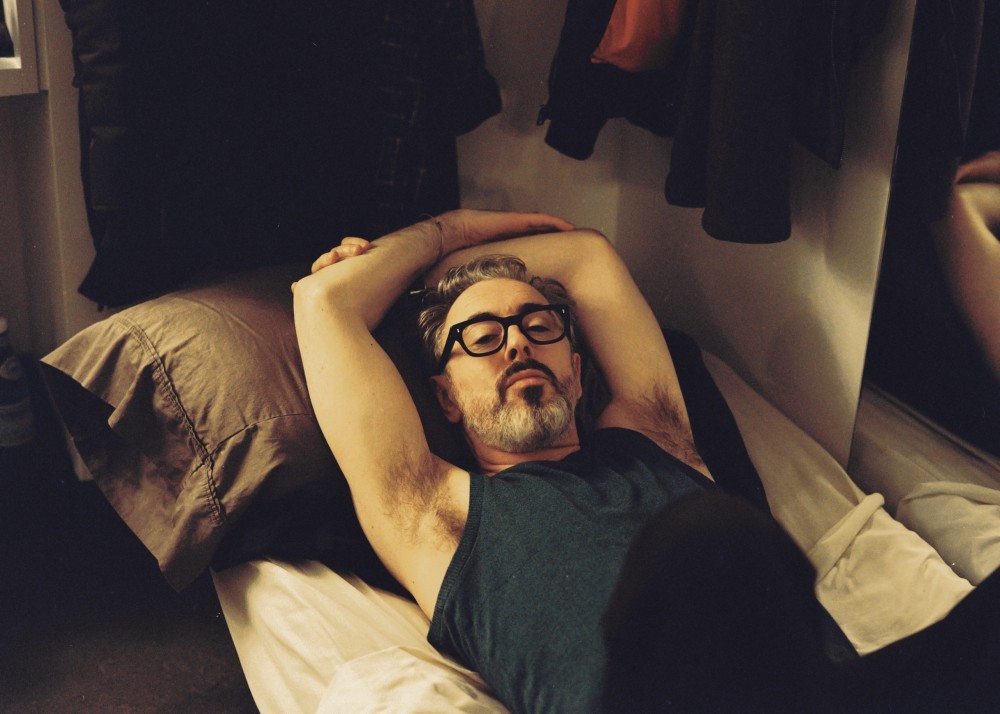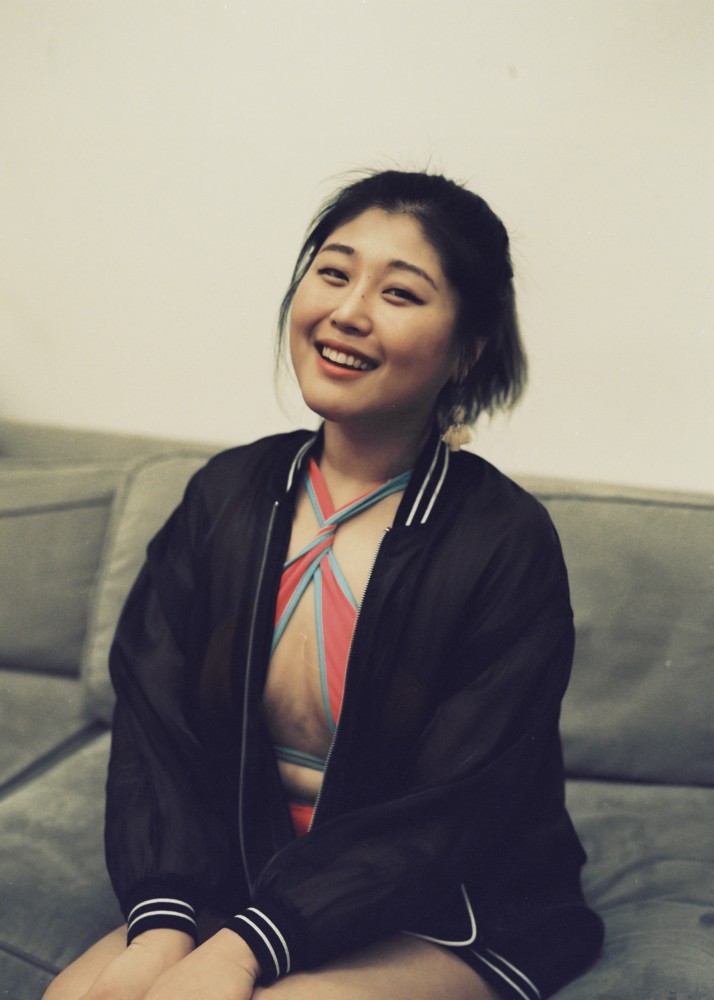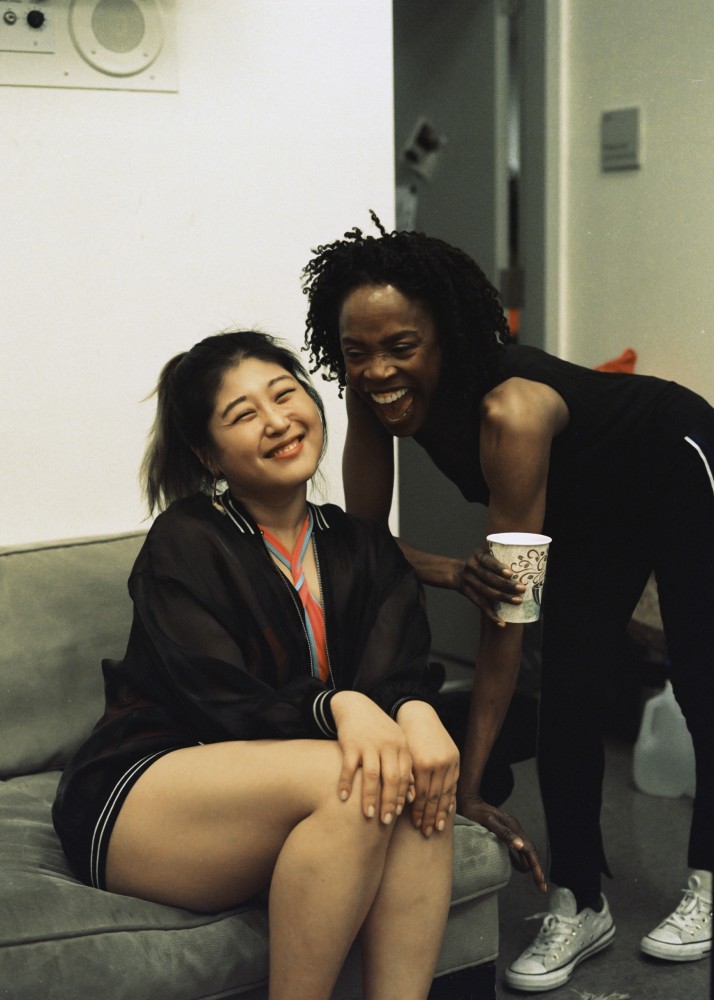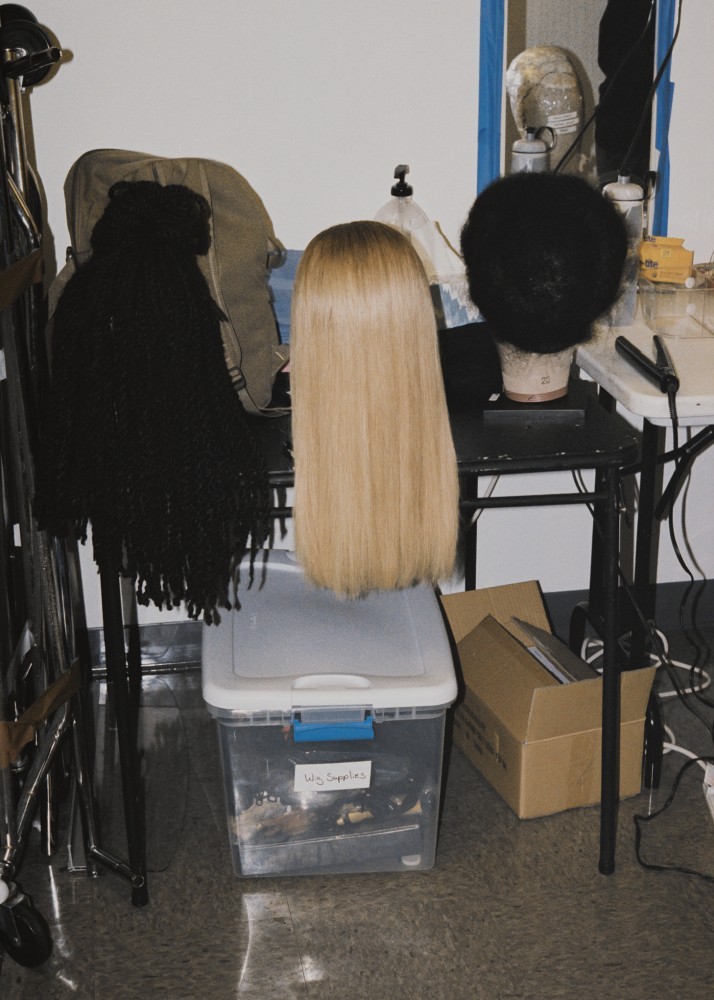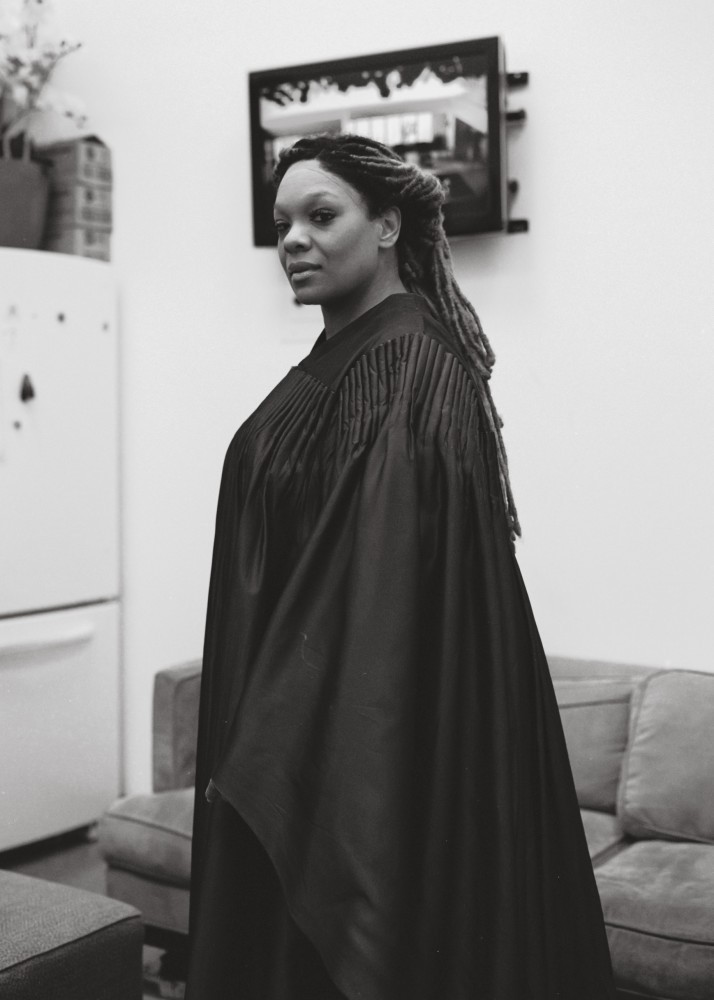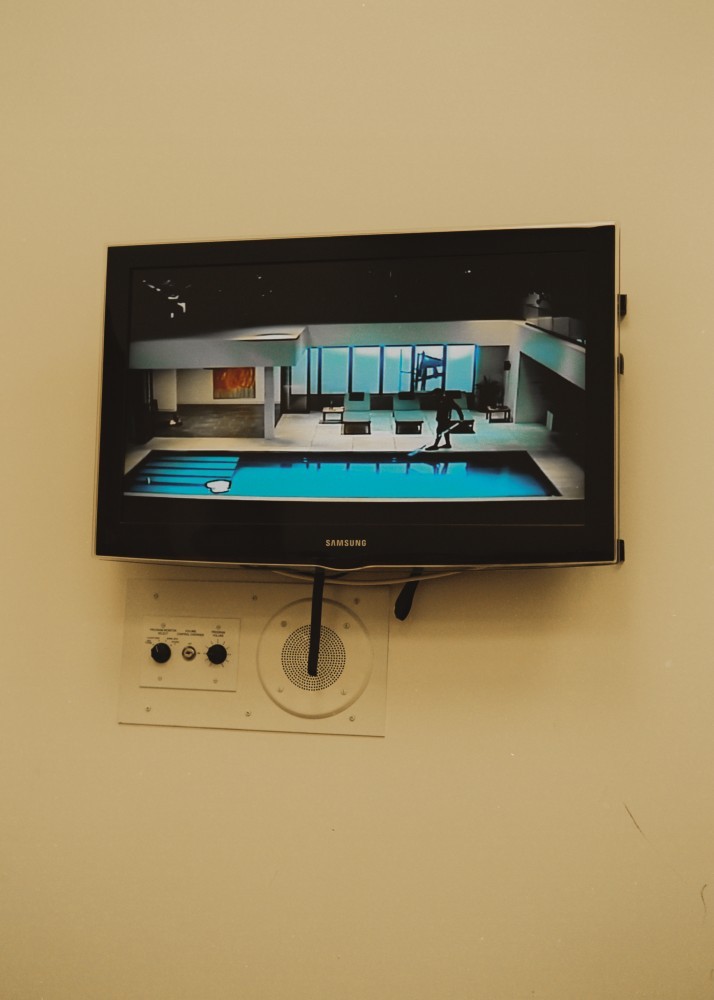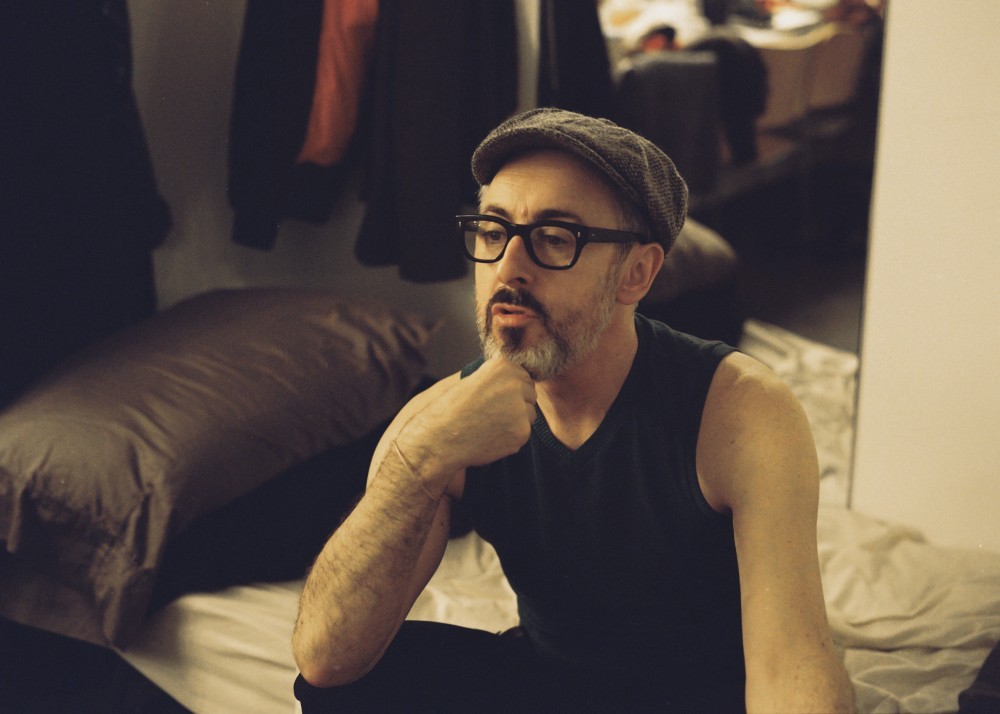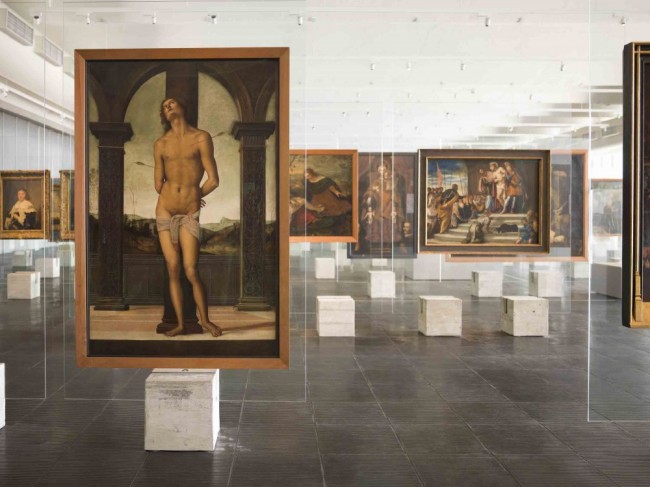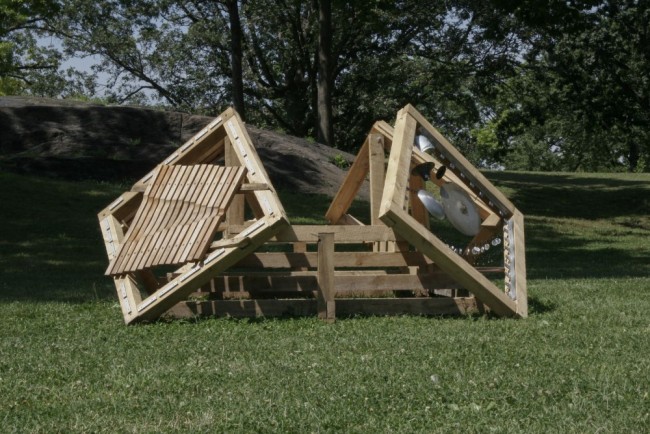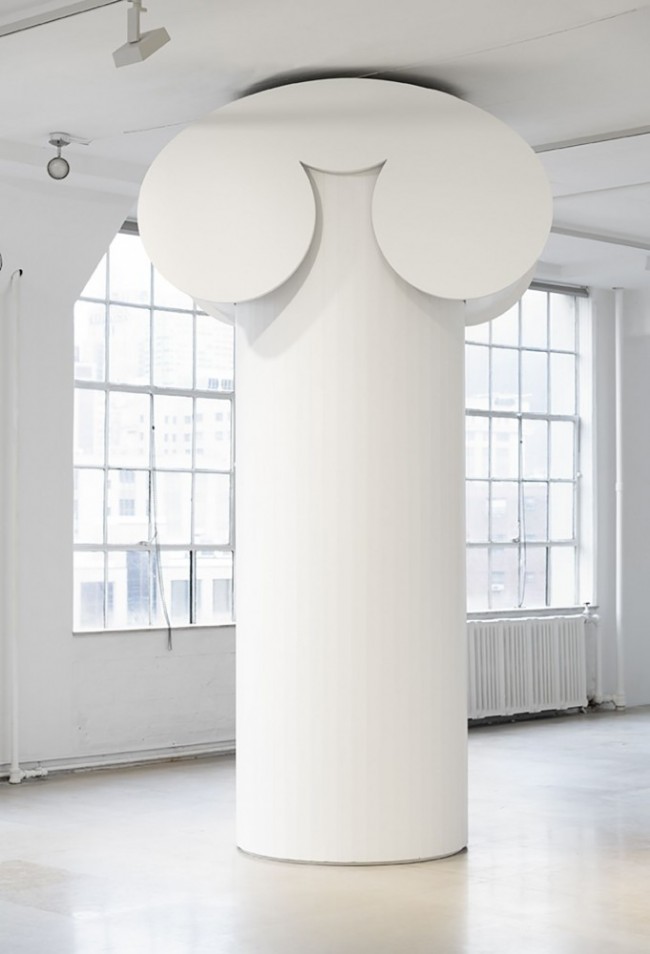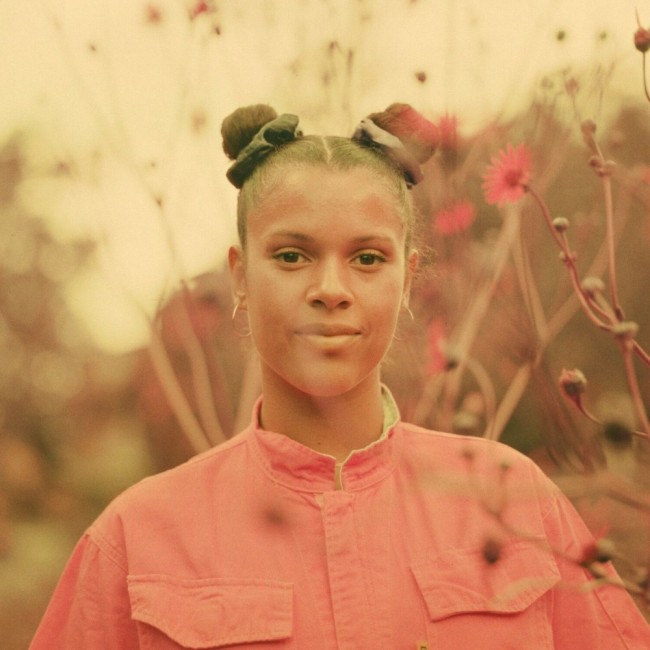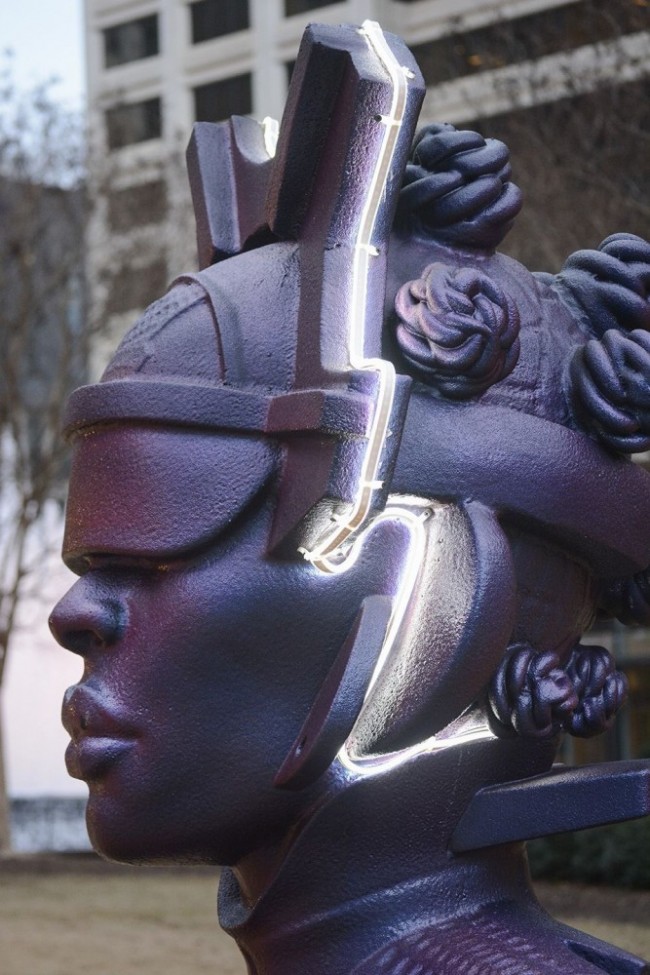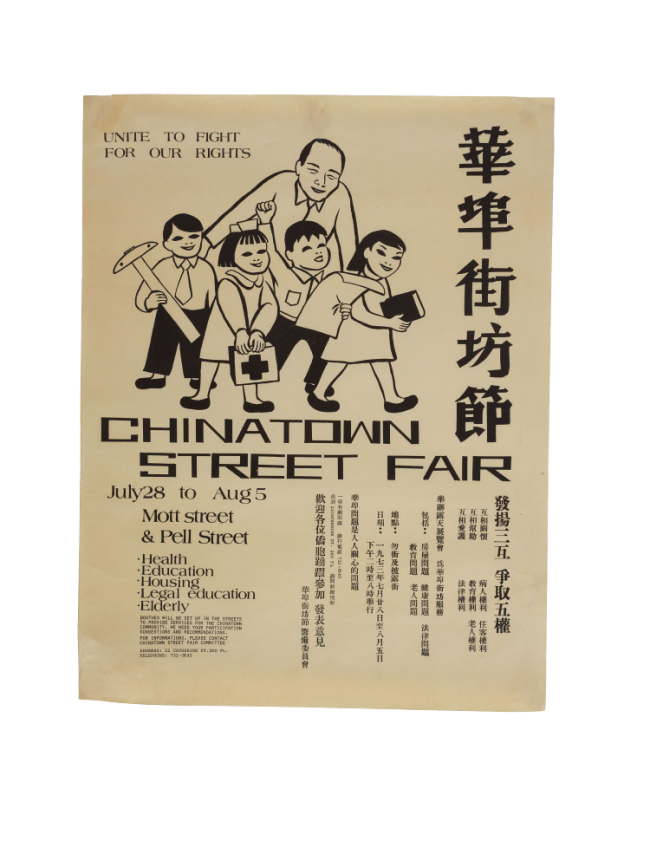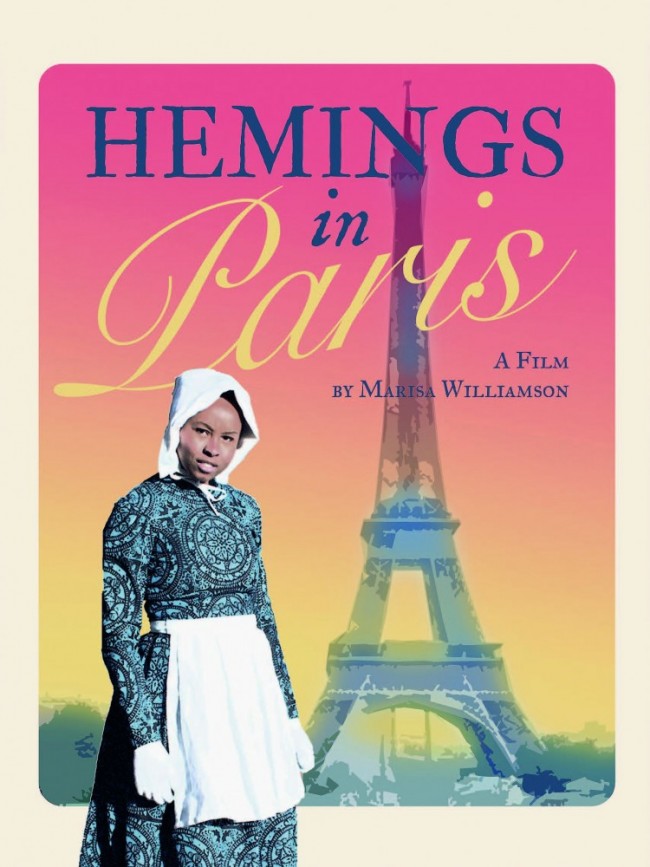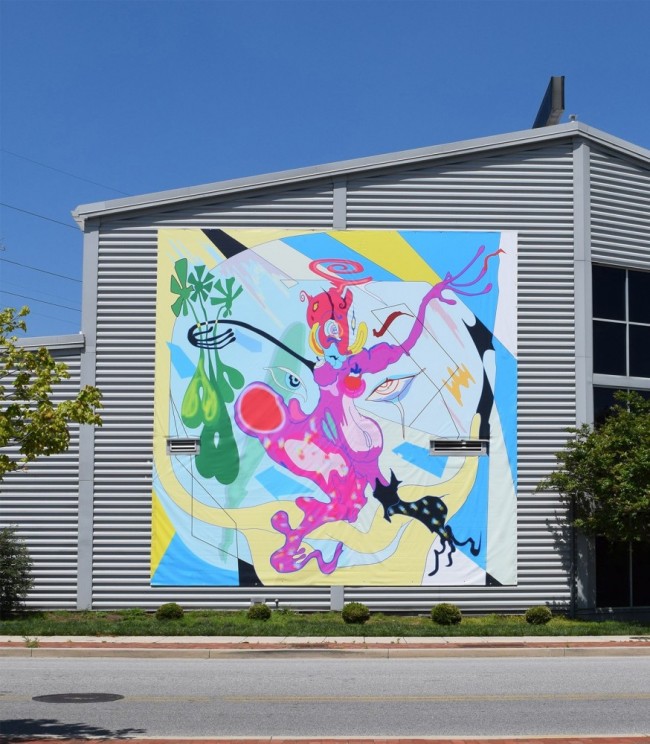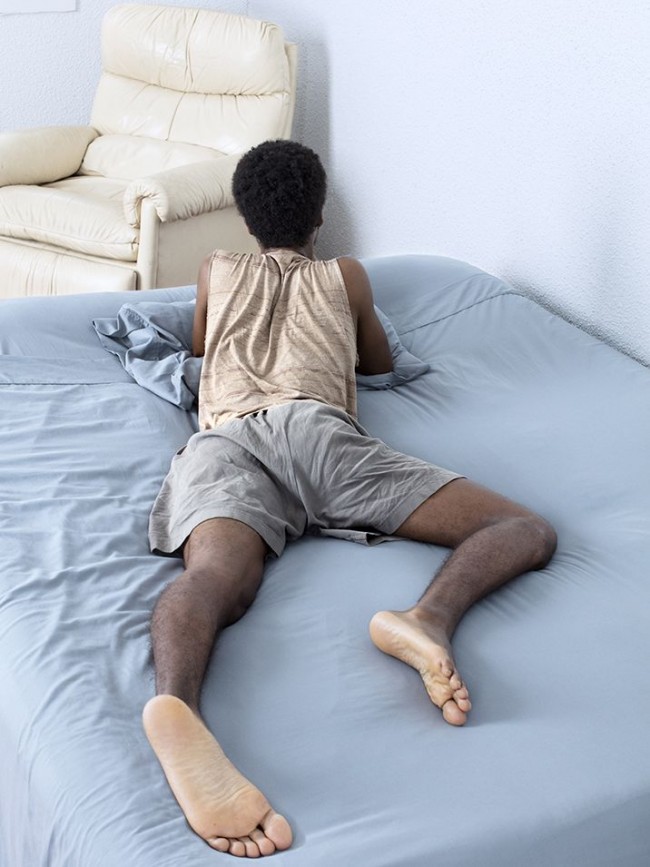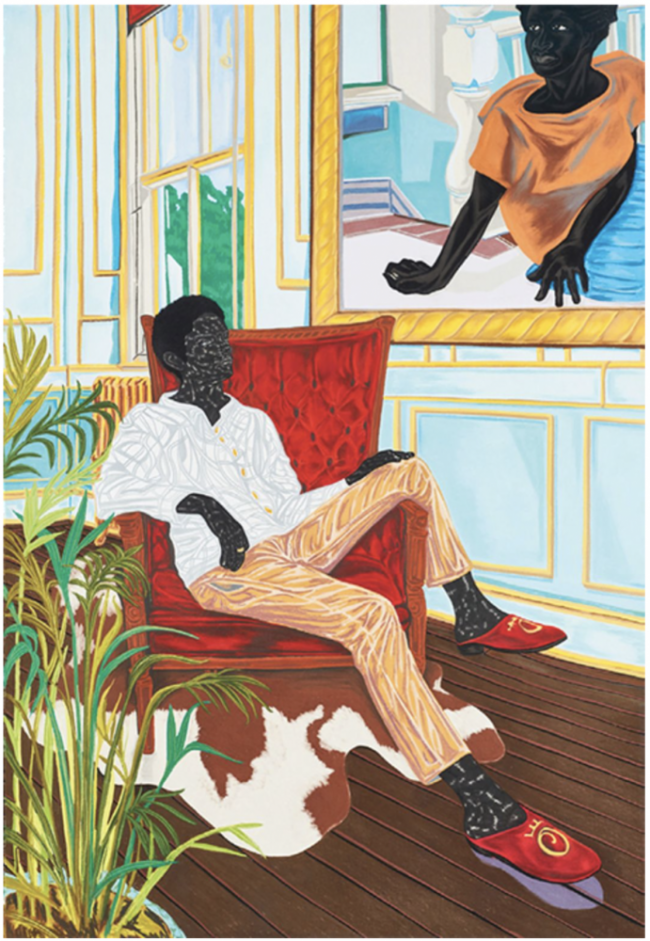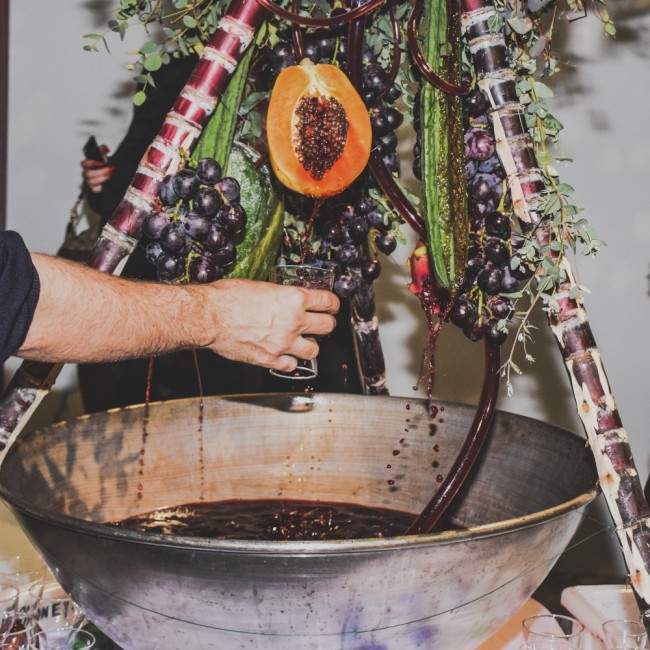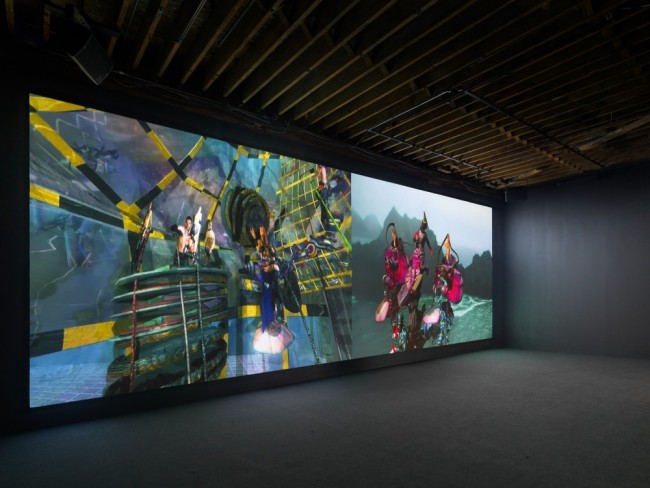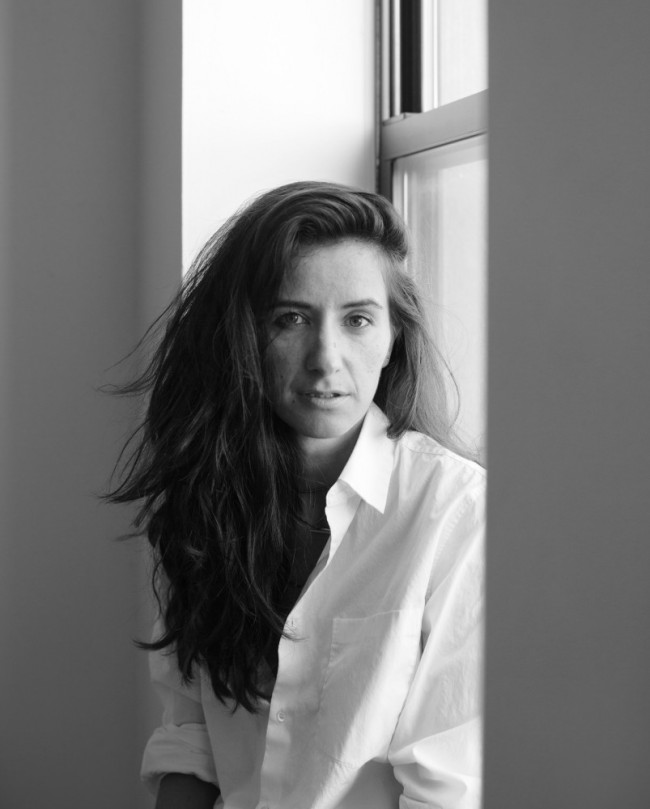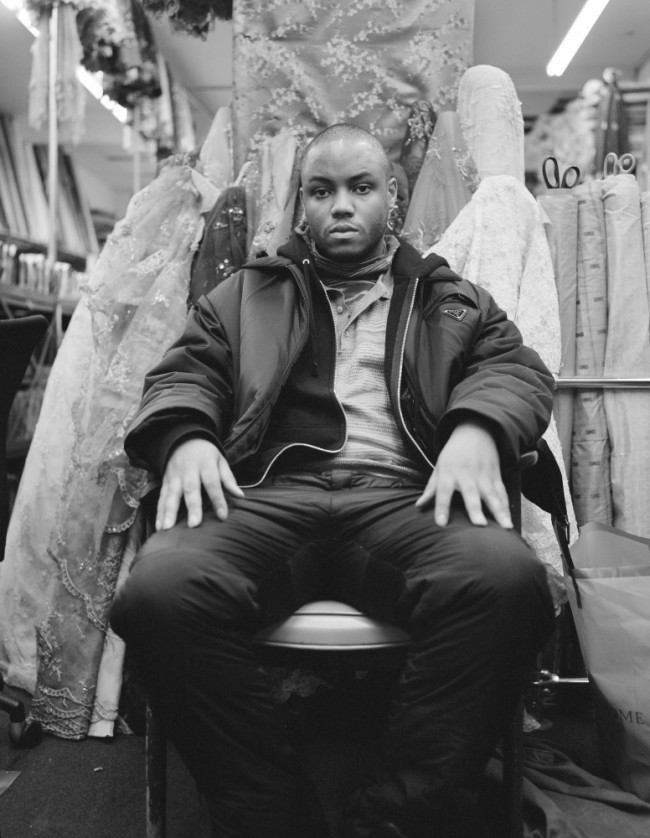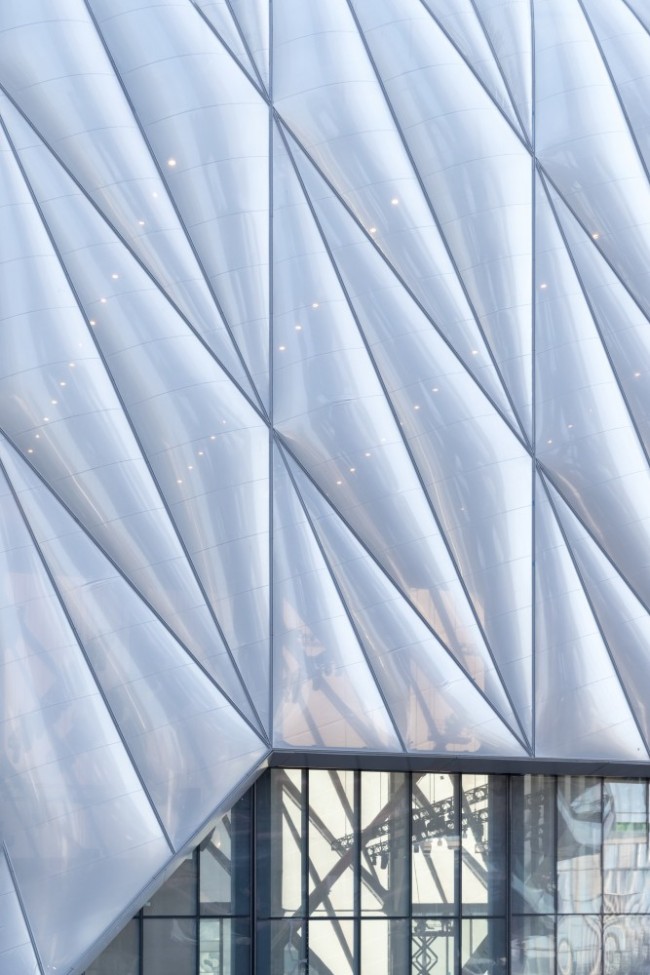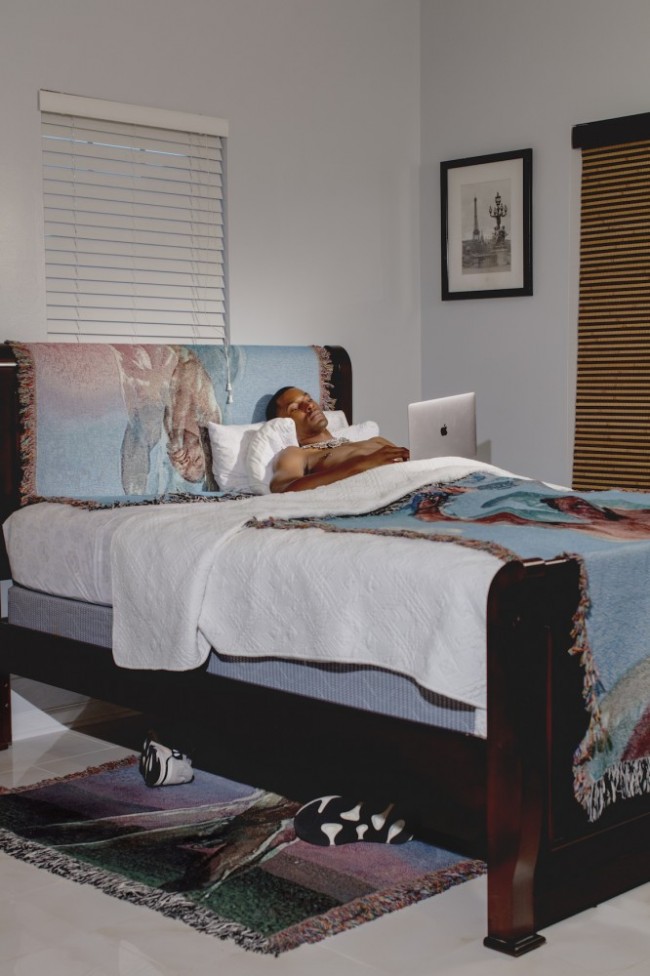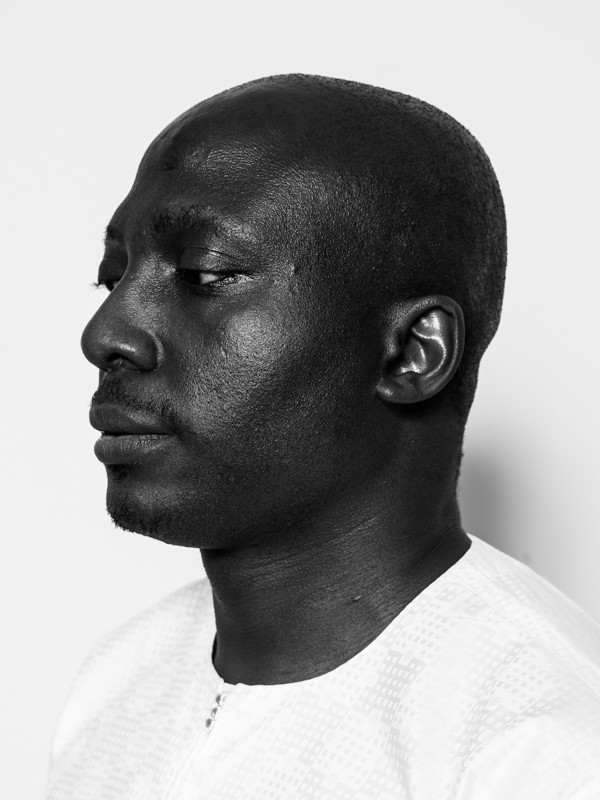INTERVIEW: “Daddy” Playwright Jeremy O. Harris On Beauty, Pools, and Trauma
To say that Jeremy O. Harris is the theater world’s current wunderkind is an understatement. Since the beginning of this year, the 29-year-old has had not one but two sold-out Off-Broadway shows — Slave Play at New York Theatre Workshop and “Daddy” at the Frank Gehry-designed Pershing Square Signature Center — all the while continuing his playwriting studies at Yale School of Drama (the title of his thesis: YELL: a documentary of my time here). Harris, who hails from Virginia and previously lived in Los Angeles, has a way of serving deceptively simple narratives that are in fact rich layer cakes of complex issues like class, power, race, and sex, the full weight of which slowly creeps up on viewers like pounds over winter. “Daddy”’s main character is Franklin, a young Black artist who starts a relationship with an older, wealthy, European collector. But an equally important player in the script is the giant pool that set designer Matt Saunders sunk at the center of the stage. It is here, in the wet of it, that at least 50 percent of the action takes place: swimming, playing, praying, and, of course, fucking. Part Hockney, part anonymously aspirational boutique hotel, the pool and its surrounding architecture of aestheticized strangeness offer the perfect backdrop for “Daddy”’s plot of dramatized queer subconscious. (Read Miles Gertler’s essay on “Daddy”’s set design here.) “Daddy”’s plot and tone straddle the line between the specific and the universal, blending unapologetically contemporary language and allusions with classic tropes from theater, cinema, TV, and Black churches, the latter in the form of a small all-female choir. So varied are the references, and so comfortable is Harris in talking about them, that the best way to interview him is by suggesting words and simply letting him riff uninterrupted on some of “Daddy”’s big themes. PIN–UP did just that, one week before the show closed, and also got unprecedented access to photograph the cast backstage. Ladies and gentlemen, Mr. Jeremy O. Harris!

Backstage on the set of “Daddy” at the Pershing Square Signature Center/Romulus Linney Courtyard Theatre in New York City. Photographed on March 22, 2019 by Kevin Buitrago for PIN–UP.
ARTIST/COLLECTOR
“I’ve always been curious about collectors. I never was one of those kids who had a rock collection; I also didn’t collect Pokemon cards, or anything. People who have a tendency towards holding, or keeping, or even hoarding certain things — that’s an interesting psychology for me, and as I grew up I started to become keenly aware of how people collected and what they collected. I never needed Marie Kondo in my life — I’m very much like ‘This no longer sparks joy, I’m leaving it.’ (Laughs.) But I started to notice how my tendency to tend to want to break away from things that no longer ‘spark joy’ was not a tendency a lot of people in my life shared. When I was 13 I had a best friend who was a huge collector, and at some point I could see we were no longer living with the same vibrancy that we once had, but he felt like what we had was something he had to hold onto in the same way forever. Because that’s the thing with collectors: they hold onto things in the same way forever. Very rarely do collectors just let a piece go. I started thinking about that and how that intersects with race.
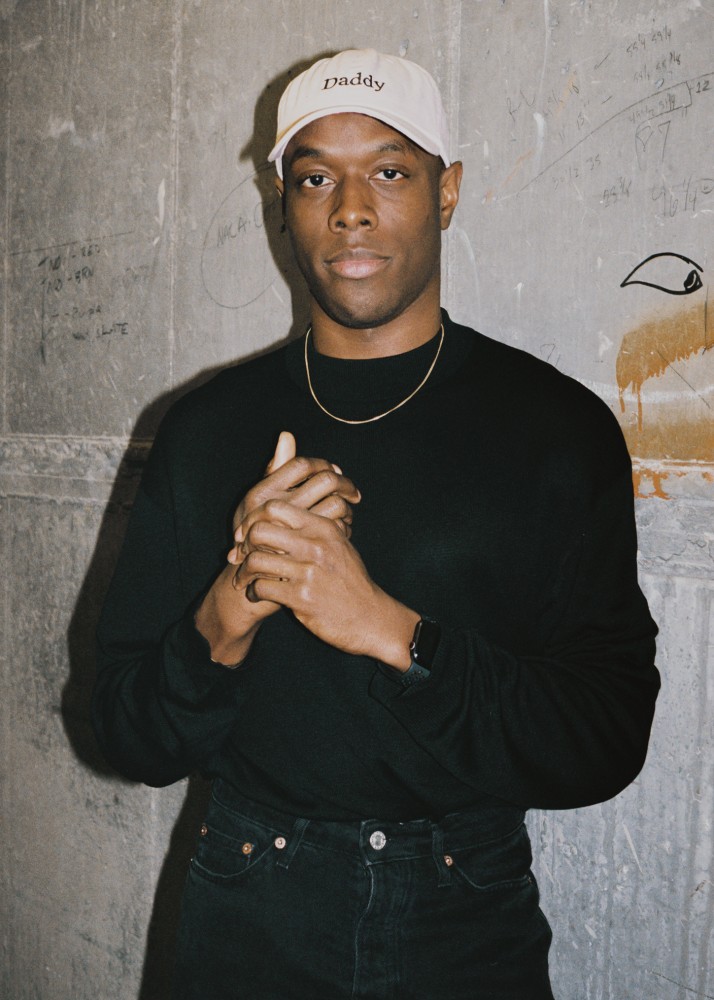
Actor Ronald Peet photographed on March 22, 2019 backstage at the Pershing Square Signature Center/Romulus Linney Courtyard Theatre in New York City. Portrait by Kevin Buitrago for PIN–UP.
In terms of “Daddy”, it became really easy for me to see Franklin, the artist character (played by Ronald Peet), as someone who had always had a sort of roaming sensibility: he can feel both the freedom of being someone that’s being collected, because being collected means that you have value; but he can also feel the claustrophobia that being collected gives you. People could be doing nothing at all to you, they could just be admiring you, and that can become overwhelming, and overpowering, and overbearing. It’s about objectification, about immediately becoming an object. But I think that happens anytime we desire anyone; the minute we desire anybody, they become the object of our desire. There’s something really interesting in dissecting what that means for both your own subjectivity and to theirs. To desire someone is to see them as an object of your imagination. Some part of them becomes solid, material in your brain, even if that’s only one piece of the fabric that makes them a full human being. That’s the part you latch on to. And I think something like love is you finding enough pieces to start to form a full human of, but rarely do we do that.
The other reason I chose an art collector (played by Alan Cumming) and an artist as the main characters in “Daddy” is because, first of all, I love art. I think art allows for a space to have a lot of great conversations. “Daddy” is about the subconscious, and the art world is the place that has the most and the fewest rules. It’s the place that feels most alien to people, so you can really dissect the subconscious really easily in relationship to that. “Daddy”’s starting out with someone who owns a Cy Twombly becomes a kind of Rosetta Stone for how to understand the abstraction that’s happening inside of the play — because the art that’s hanging on the walls in the first part is almost uniformly by abstractionists painters.
Another thing is that art can also be so alienating to people — they already feel like they have to have a degree to know it. Just hearing names like Cy Twombly, Robert Rauschenberg, or Ana Mendieta in the first part of the play became a space of anxiety for some critics or some members of the audience, who felt the play was trying to show off how smart it was. But really it was just saying ‘No, here are the people that make up a mental landscape that’s very similar to the mental landscape we’re going to be inhabiting for these next three hours.’ And maybe during one of these two intermissions you will get a chance to Google these names, if you weren’t already familiar with them. (Laughs.)”
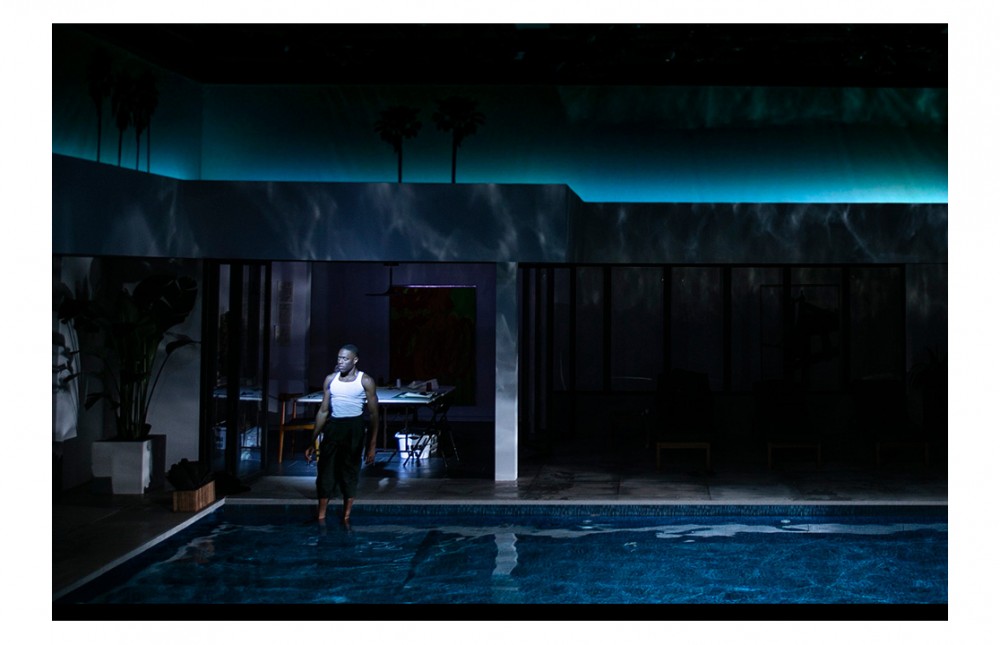
Ronald Peet in “Daddy,” by Jeremy O. Harris, directed by Danya Taymor. “Daddy” is a co-production from The New Group and Vineyard Theatre at The Pershing Square Signature Center. Photo by Matt Saunders.
TRAUMA
“Culturally, we’re in a really interesting space right now because we want to be post-trauma, but it’s impossible. And as we are seeing the impossibilities of being in a trauma-less environment, I like to think about how my work can allow us to have a collective recognition of our own trauma so that we can move past it, or move through it with more ease and with less subterfuge and Sturm und Drang. The calls for ‘safe spaces’ and all these other things are so important but they also imagine that there can be some space or some lifetime free from trauma. I think that Tavia Nyong’o talks about this really beautifully in his new book (Afro-Fabulations: The Queer Drama of Black Life). Being someone who has the bruises of trauma can fortify you for more complex human interactions. You can’t live without getting sick so I don’t know that you can live without being traumatized. I want to be able to truly mine not only my own trauma but also the collective trauma I see around me, in order to help people know that they’re not alone. People like to imagine that, because of the specificities of their own trauma, they’re alone in it, and that’s why they believe that there should be no more trauma. But I’m saying ‘No, no, no, you’re not alone in this trauma.’ Because, especially in America, we tend to reject psychoanalysis in favor of pharmaceuticals, which dull trauma instead of helping us walk through it. Or they put blinders against trauma. I’d rather take the blinders off, and look at it, so I can see the shape of it, and mine it.”
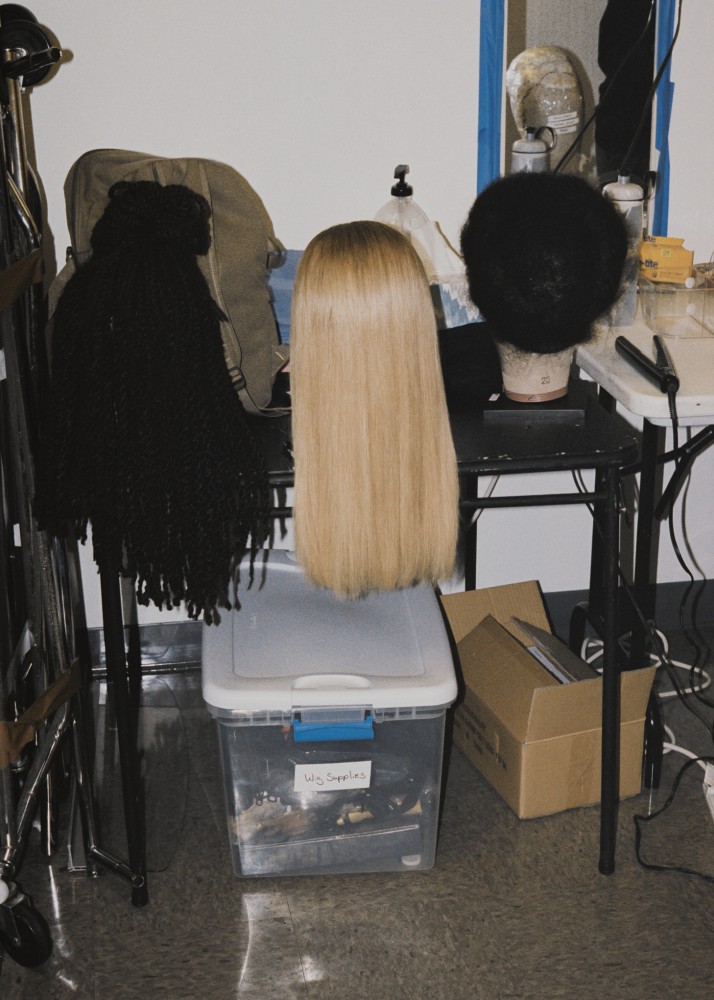
Backstage on the set of “Daddy” at the Pershing Square Signature Center/Romulus Linney Courtyard Theatre in New York City. Photographed on March 22, 2019 by Kevin Buitrago for PIN–UP.
CAMP
“I think that the concept of camp is very misunderstood in our culture. I think camp is fun because you can’t plan it. With “Daddy”, I didn’t plan camp, I planned melodrama — which has a lineage that’s in relationship to camp, but you can’t plan it. You don’t know how anyone’s going to respond to it. I think that camp is an actual queer landscape of the imaginary, because there’s a formalism to the disorder of camp. You have to be trying to follow certain rules, in order for the camp to pop out. Here you have the queering of a classic form — 19th-century melodrama — with a plot centering around an intergenerational, interracial relationship between an art collector and an artist whose soul is in a psychomachia between his mother (played by Charlayne Woodard) and this new boyfriend. None of those new elements would make aspects of it camp unless it was vulnerable to melodrama. It has to be queering something that follows a formula we all recognize.”
-
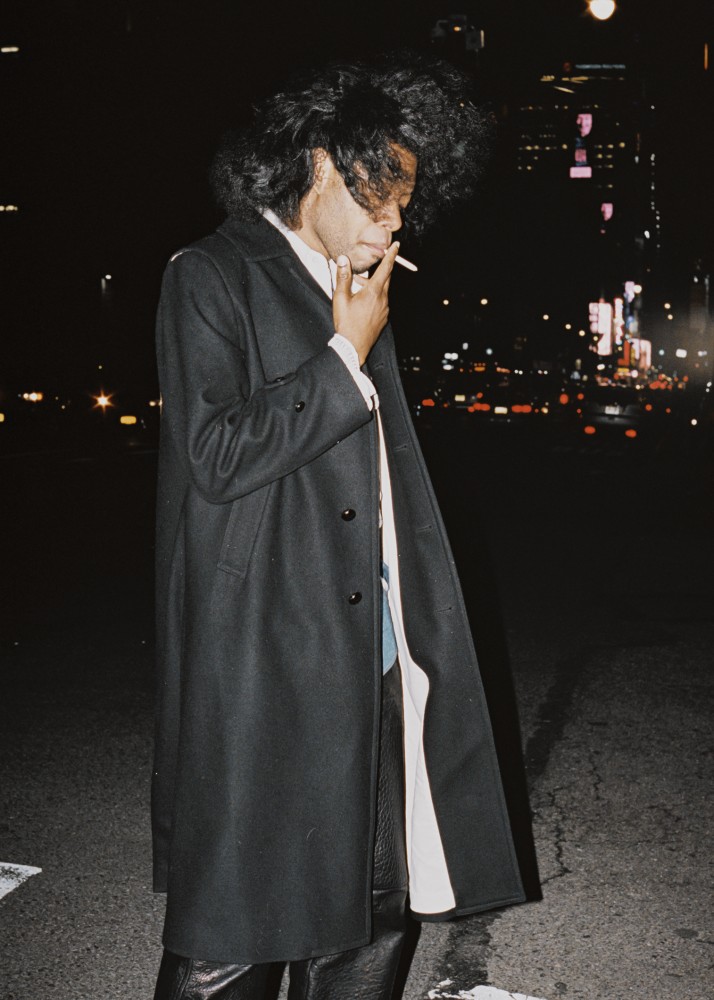
Jeremy O. Harris photographed on March 22, 2019 on 42nd Street in front of Pershing Square Signature Center/Romulus Linney Courtyard Theatre in New York City. Portrait by Kevin Buitrago for PIN–UP.
-

Playwright Jeremy O. Harris photographed on March 22, 2019 on 42nd Street in front of Pershing Square Signature Center/Romulus Linney Courtyard Theatre in New York City. Portrait by Kevin Buitrago for PIN–UP.
-

Jeremy O. Harris photographed on March 22, 2019 on 42nd Street in front of Pershing Square Signature Center/Romulus Linney Courtyard Theatre in New York City. Portrait by Kevin Buitrago for PIN–UP.
AUTOBIOGRAPHY
“People have tried to put the idea of autobiography onto “Daddy” but it doesn’t work. The only things that Franklin and I have in common are that we’re both from Virginia, we’ve both lived in L.A., and we both have father issues — but those feel like very superficial commonalities. But what I would say is that there are a lot of psychological relationalities between him and me — in the ways in which we move through the world and engage with the world — that I think make the play sort of like a weird self-portrait, like a distorted self-portrait wherein this artist is taking the object of himself and placing it inside a landscape that looks nothing like the landscape that he is actually a part of — it’s truly alien — and by taking this scratchy-faced version of myself and putting it inside this world, I’ve been able to create a new character. Tennessee Williams did that with all of his women — all of them were literally him in drag, but they became new humans each time. So Maggie (from Cat On A Hot Tin Roof) isn’t exactly Blanche (from A Streetcar Named Desire) but she isn’t exactly not. There’s a queer lineage of this: Lanford Wilson did this a lot, even Tony Kushner and (the character) Louis (Ironson) inside of Angels in America. There’s no way to look at Louis, who is this hyper-political Jewish super-smart lawyer/artist, and not see Tony Kushner. So Franklin in “Daddy” is as much me as Louis is Tony in Angels in America.”
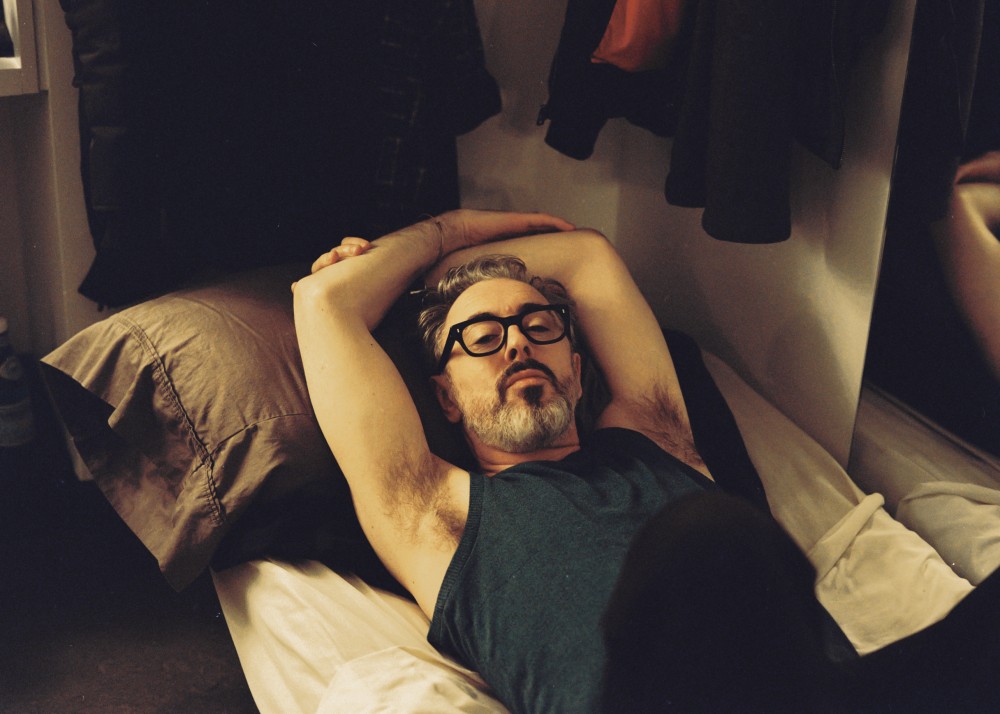
Actor Alan Cumming photographed on March 22, 2019 backstage on the set of “Daddy” at the Pershing Square Signature Center/Romulus Linney Courtyard Theatre in New York City. Portrait by Kevin Buitrago for PIN–UP.
BEAUTY
“Beauty is something that I am consistently suspicious of. I’m suspicious of ideas around beauty. I remember in the first week of previews I was getting upset that people were like ‘Well, the set’s so beautiful.’ What does that even mean? That means literally nothing. Partially because I was someone who never grew up being called beautiful, I don’t imbue that word with anything positive. The people I saw getting called beautiful were people that I saw in one dimension, and so I’m really interested in how beauty flattens the idea of a thing. Growing up with my mother, people always used to call her beautiful — and that will flatten her. Don’t get me wrong, my mom is beautiful, but she’s so much more than that! So beauty is something that I don’t know how not to be suspicious of.”

Actors Kahyun Kim, Charlayne Woodard, Alan Cumming, and Tommy Dorfman in “Daddy,” by Jeremy O. Harris, directed by Danya Taymor. “Daddy” is a co-production from The New Group and Vineyard Theatre at The Pershing Square Signature Center. Photo by Matt Saunders.
LOS ANGELES
“I love L.A. I miss L.A. I think L.A. is where I found out how to be an adult. I think L.A., and California in general, is this really amazing landscape, because there’s true freedom there, around every corner. That’s the historic necessity of the West, it lets you rebrand and rebuild and to try on new masks. I was talking to my friend Tory Sampson about how it’s important for little kids to lie; I think it’s important for young adults to rebrand. To find a new mask to wear. You can’t do that in your hometown; and New York usually moves too quickly for you to do that. But in L.A., there is a languidness, an openness of space, and because it’s so expansive, you can be a different person in Silver Lake than you are in Culver City than you are in Highland Park. That ability to transform is really beautiful.”
CHRISTIANITY
“Christianity is one of the first entry points I had into moralism and sex and sexuality, and also to great stories. I think that when people actually engage with Christianity, on a text level, if they do textual analysis of the books, it’s actually one of the most erotic texts in the world. The Bible also has some of the best words for an artist to live by, about staying true to your actual self, letting go of ego in favor of some spirituality, or some sensibility towards God. I think my God is channeling the collective traumas and putting them on the page right now, but as long as I can keep Jeremy at bay in favor of serving that, that’s really exciting. I don’t know if I would have that same sensibility if I hadn’t grown up a Christian who read the Bible everyday.”
-
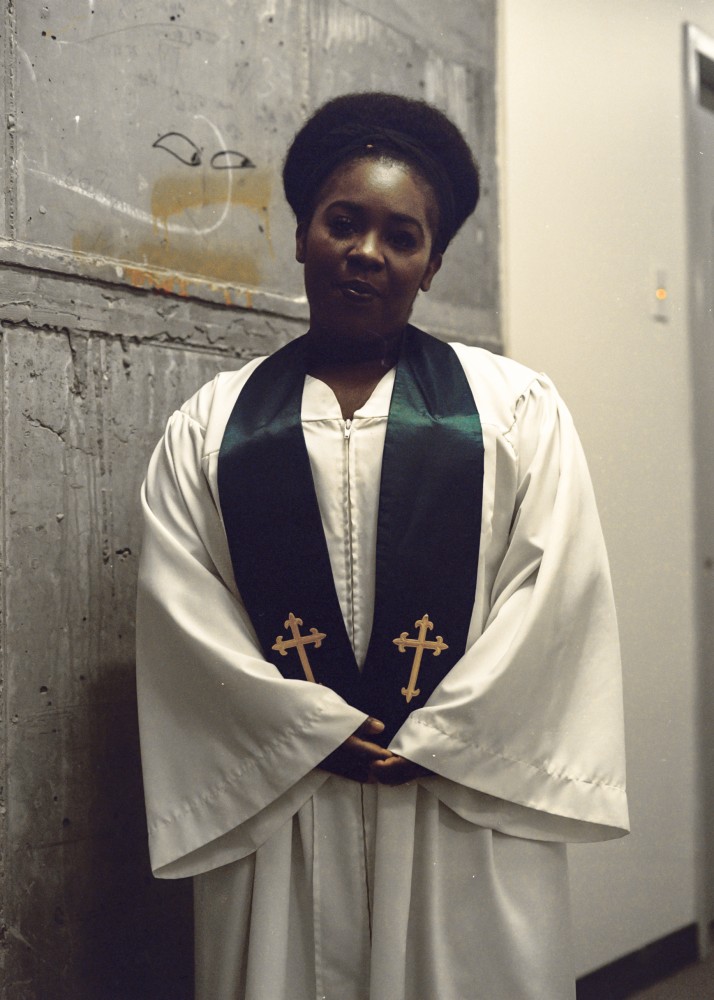
Actor Denise Manning photographed on March 22, 2019 backstage on the set of “Daddy” at the Pershing Square Signature Center/Romulus Linney Courtyard Theatre in New York City. Portrait by Kevin Buitrago for PIN–UP.
-
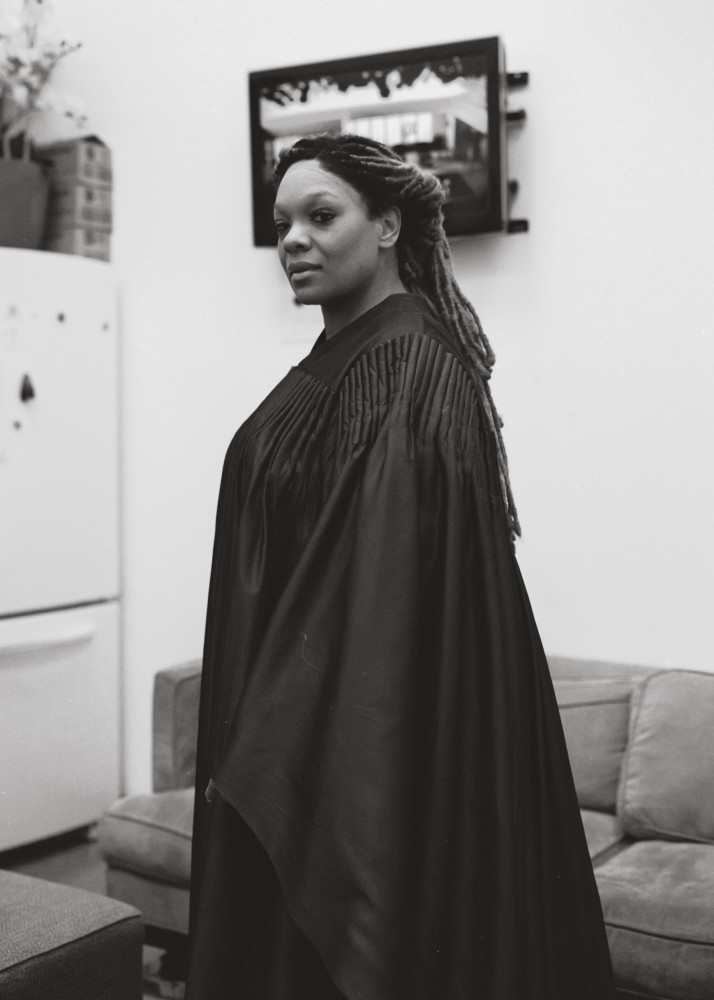
Actor Carrie Compere photographed on March 22, 2019 backstage on the set of “Daddy” at the Pershing Square Signature Center/Romulus Linney Courtyard Theatre in New York City. Portrait by Kevin Buitrago for PIN–UP.
-

Actor Onyie Nwachukwu photographed on March 22, 2019 backstage on the set of “Daddy” at the Pershing Square Signature Center/Romulus Linney Courtyard Theatre in New York City. Portrait by Kevin Buitrago for PIN–UP.
CHOIR
“American music is Black music, and in a way Black music is church music, You can’t listen to Shirley Caesar or Dottie Peoples and not love how big the voices can be inside a Black church. Even hearing modern singers like Moses Sumney or serpentwithfeet, you find a Black queer love affair with the voices in the church, and how they could fly and how low they could go, how they dance together… That queerness of the gospel choir is not necessarily sexual, it’s queer in the way that being Black is inherently queer: it’s so other that it stays with you. For “Daddy” I wanted everything that stayed with me — that I felt like I had to hide when I was wearing one of my many masks because it denoted too much about where I was from. I wanted to have that firmly on stage. I wanted that queer choir, that queer feeling of the Black choir that I grew up with. (The members of the choir are Carrie Compere, Denise Manning, and Onyie Nwachukwu.)
But I’m also a structure whore, and in “Daddy” I use the choir very much like a Greek chorus. Aristotle is my bae. (Laughs.) I think one of the reasons that a lot of playwrights have responded well to my plays is that the architecture of my plays is really sound. The rules they break only feel significant because the other rules have been followed so specifically. And so I really get off on having things that can reference or harken back to another moment, because our brains do this thing where we’re like, ‘We already know the rules of this. This is how that’s supposed to function or that’s supposed to function.’ As far as melodramas go, they don’t normally have a Greek chorus, but they do generally have an ensemble, and they had singers and an orchestra. I think having this embodied orchestra that functions like a Greek chorus — because a Greek chorus comments on what’s happening —, so having the subconscious commenting via music, is very exciting.”
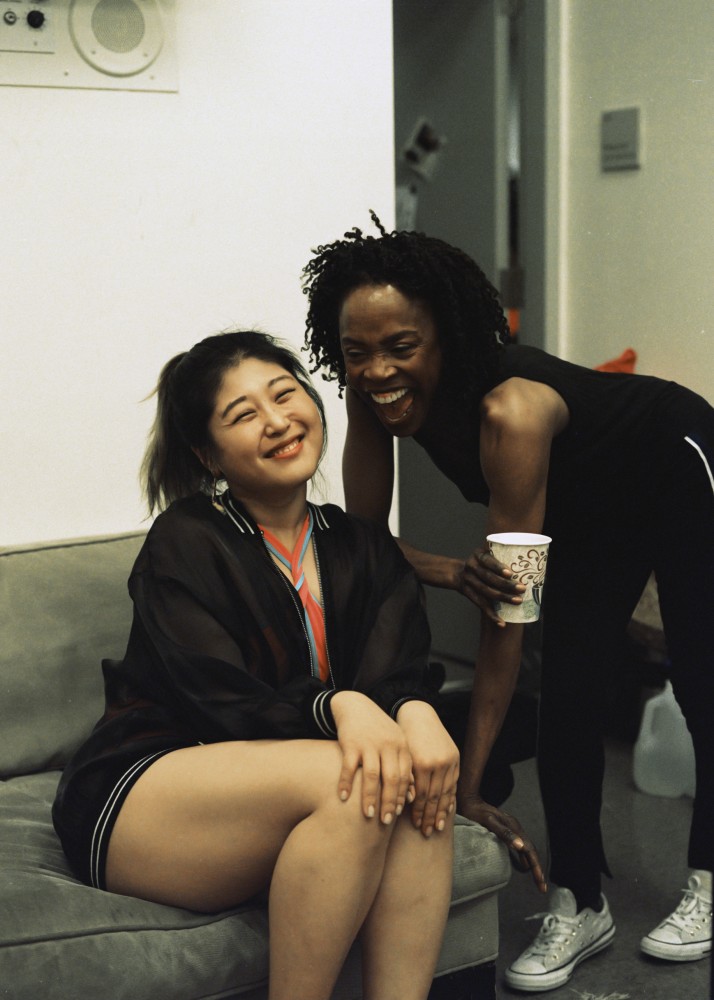
Actors Kahyun Kim and Charlayne Woodard photographed on March 22, 2019 backstage at “Daddy” at the Pershing Square Signature Center/Romulus Linney Courtyard Theatre in New York City. Portrait by Kevin Buitrago for PIN–UP.
POOLS
“I think water is so great. I think that pools are really great. And I think the ability to have a pool inside of a theater is extremely rare. And if you’re going to do that, you have to invite the audience into the world in an immersive way, and there’s no better way to do that than having people being right on the lip of a pool and even get them a little wet.”
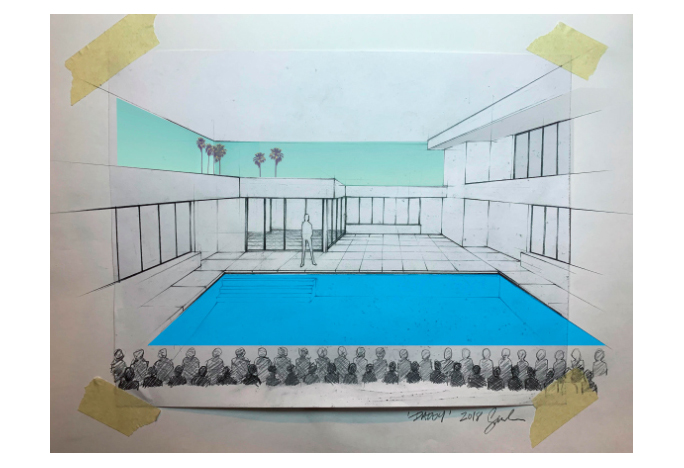
Sketch of the set for “Daddy,” 2018. Courtesy of Matt Saunders.
ARCHITECTURE
“When my friend (the architect) Miles (Gertler) started to read through “Daddy”, he commented on how I was describing such a specific type of house (Click here to read Miles Gertler’s essay for the Avery Review about Daddy’s stage design). I was very excited because I’m usually not one of those people who can walk up to a place and be like, ‘That’s a Wright house. That’s a that house.’ In a sense I feel ignorant because I haven’t had a chance yet to study the beautiful and varied world of architecture. I just know what kind houses I like and I can hold a picture of a house in my head for a really long time. Especially of interior architecture. I think that my personal anxiety around interiors is part of the reason why in “Daddy” we never go inside his house. (Laughs.) It’s relatively easy to identify the kind of elements that make the house in “Daddy” both gauche and exciting from the outside — but it’s much harder to do that on the interior; I think that’s the next challenge for myself, architecture-wise. In a way it was a lot easier for Slave Play, because there’s a lot of conversations in the text around what an antebellum house looks like — I know that kind of architecture like the back of my hand because I’ve been to so many of those houses growing up in Virginia. But in the end we decided that creating that kind of stage for Slave Play a) would have been really difficult given the budget and the location and b) wasn’t really necessary. Whereas in “Daddy”, the visible architecture is such an integral part of the story.”
CASTING COUCH
“It’s dark. I’ve had a lot of friends who have been invited in and around the casting couch and that’s really, really not okay. I was explaining this to my mom, who is still trying to navigate a working-class understanding of how some of the hyper-pervasive #metoos happen. I’ve tried to tell her that when you’re a young person and you have a lot of ambition, you want to imagine that everyone is seeing your full ambition when you sit on a couch with them, sit across the table from them. Because when you’re young, you’re just trying any way you can to have someone take you seriously, and sometimes working that hard means you’re not aware of all the clues that are happening in front of you, the clues that are telling you that maybe you should go, that it’s time to leave. It gets really dark. And it’s one of the reasons why I feel I have a responsibility as a young creator to be a good mentor to young people who are excited about me, or are looking up to me, but also to create spaces of distance. To say that I recognize the power I hold in this situation so therefore I’m going to make sure they never feel like something’s being asked of them. It’s important that the rules of the dance are always made very clear, so that at least for my generation of artists we can say, ‘These are the rules of how we engage with young artists who are excited about working with us. Let’s keep everyone safe.’”
Introduction and suggested words by Felix Burrichter.
All photographs by Kevin Buitrago for PIN–UP unless otherwise noted.

